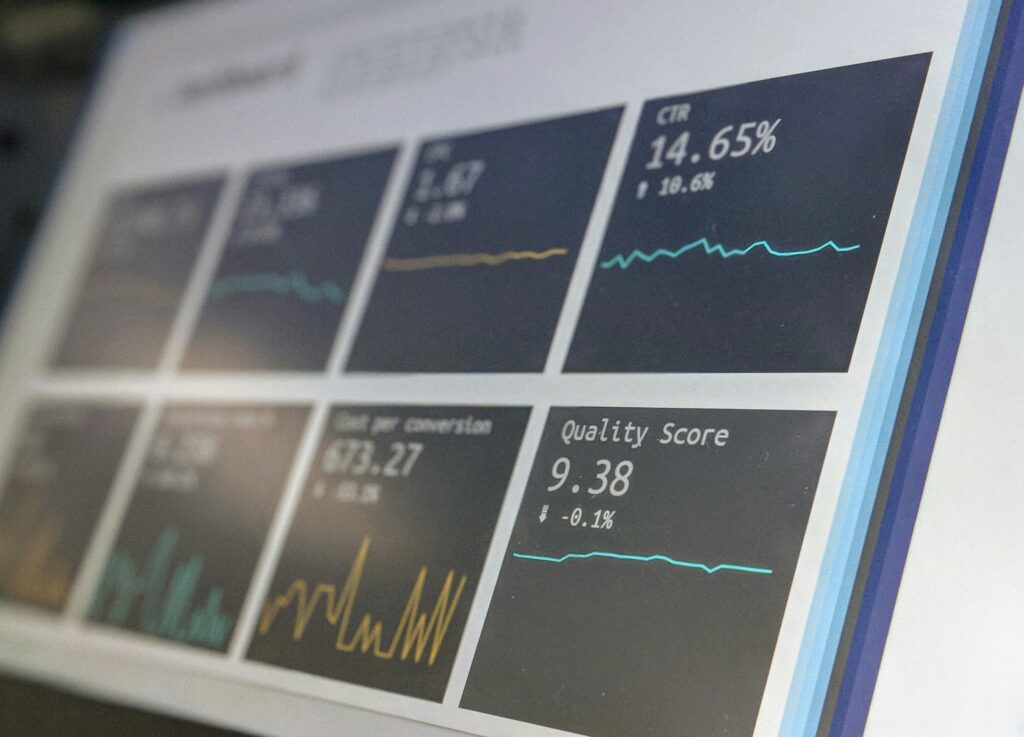Investing in digital signage can feel like a leap, especially when comparing the upfront costs to those of traditional print signage. However, as businesses continue to adopt screen-based communication, one question remains: Is digital signage worthwhile?
The short answer? Absolutely!
From enhancing customer experiences to streamlining internal messaging, digital signage and displays offer measurable returns across industries. Whether you’re displaying dynamic promotions or sharing real-time information, the right setup can pay for itself many times over.
Let’s explore the tangible benefits, how to get started, and what real-world results look like.

Benefits of The ROI of Digital Signage
Benefit #1: Increased Audience Engagement
Unlike static signage, digital screen displays use movement, animation, and vibrant colours to grab attention. In busy environments like retail spaces, offices, or transportation hubs, where capturing audience attention is a serious challenge, this can significantly increase dwell time and message recall.
Well-designed digital signage content is more than just visually appealing; it’s interactive, adaptable, and purpose-driven. Whether it’s a QR code linking to increases, and so does ROI.
For brands, this means more sales. For internal communication teams, it means better-informed staff. In either case, your messaging is going further than reaching, but informing. Use web pages to heatmap and measure engagement.
Benefit #2: Cost Efficiency Over Time
While the initial investment in digital signage displays and digital signage players might seem high, the long-term savings quickly outweigh the setup cost.
With traditional signage, there’s an ongoing spend on printing, design changes, shipping, and physical labour. Digital signage, however, lets you update content instantly, across one or hundreds of screens, or at the push of a button.
Many organisations find they save thousands annually just by eliminating print-based campaigns. And for growing businesses, the scalability of digital solutions ensures ROI improves as your network expands.
Benefit #3: Real-Time Updates and Flexibility
One of the most valuable advantages of digital signage is adaptability. From product promotions to emergency alerts, content can be changed in seconds.
This level of control allows for super-targeted messaging. Retailers can change offers by location or time of day. Offices can display personalised welcome messages for clients. Schools can broadcast real-time updates or safety instructions.
The immediacy reduces wasted effort, helps you respond to events in real time, and ensures your signage always stays relevant, all without incurring extra cost.
Implementation Tips
To maximise ROI, a thoughtful implementation strategy is key. Here’s how to get it right:
- Choose the right digital signage player: A reliable media player ensures smooth playback, remote control, and integration with your content management system (CMS). The better your tech, the smoother your operations.
- Design content for your audience: Tailor your signage video and messaging to match viewer needs. Keep it concise, clear, and visually engaging. Motion graphics and short loops work well across most sectors.
- Start small, scale smart: Begin with a few digital screens in high-impact areas. Measure performance, gather feedback, and grow your network based on results.
- Integrate with existing systems: Link your screens with calendars, data feeds, or CRM systems to display dynamic content—like sales dashboards or live news.
For help choosing the right solution, our tailored digital signage solutions page outlines options for different industries and goals.
Real-World Applications
Example #1: Retail Promotions with Measurable Impact
A fashion retailer deployed a network of digital signage displays across their stores. By showcasing rotating product features, flash sales, and social proof (like user-generated content), they saw a 15% lift in impulse purchases within 3 months.
The ability to schedule content based on store location and local demand gave them greater control, and better results than static posters ever could.
Example #2: Internal Communications in the Workplace
A corporate office replaced its bulletin boards with digital signage and displays across its breakrooms, reception, and meeting areas. Using the screens to share HR updates, team shoutouts, safety messages, and KPIs led to stronger employee engagement and reduced email clutter.
With content updated centrally, they cut down on communication delays and made their workplace feel more connected and informed.
Example #3: Education Sector Alerts and Timetables
A university introduced a system of digital screens to communicate class schedule changes, campus events, and emergency messages. Thanks to real-time updates and scheduled content, students were better informed, and administrators were able to streamline communications during exam seasons and unexpected disruptions.
The university reported a 40% reduction in queries to front desk staff, freeing up time and resources elsewhere.
Final Thoughts
Digital signage, when implemented strategically, offers a high-impact, cost-effective way to communicate with your audience and drive genuine results.
From improving customer engagement to saving on print and labour, the ROI is clear. With the right tools and content strategy, digital signage becomes more than a screen; it becomes the heart of your communication efforts.
Explore your options and discover how our digital signage solutions can make it worth your while.
